Artistic Approach
In her multi-layered works, Christiane Fleissner shows the superimposition of time and space, of moods and results, which she partially laminates directly as a photo on different Plexiglas panes or places behind them. The surface texture features matt surfaces and glossy areas - blurring the foreground and "zooming in" on the layers behind. Fleissner's "event landscapes" turn the viewer into a traveler through time and space: in old factory landscapes, the plaster is peeling off the walls and deep puddles have formed on the floor, reflecting window panes and doors - of the same room, or does another level open up, a deeper, past layer? You are not sure which time zone you are in. How does the trained sculptor use photographic means - by montage or double exposure?
Annika Schoemann
Storyboards from the world

The material examination of my work began with the arrangement of contact prints in different chronological sequences. All with a view to larger photographic works that look like storyboards from the world of film and sometimes manage to create unusual connections.
The construction scaffolding as a design element
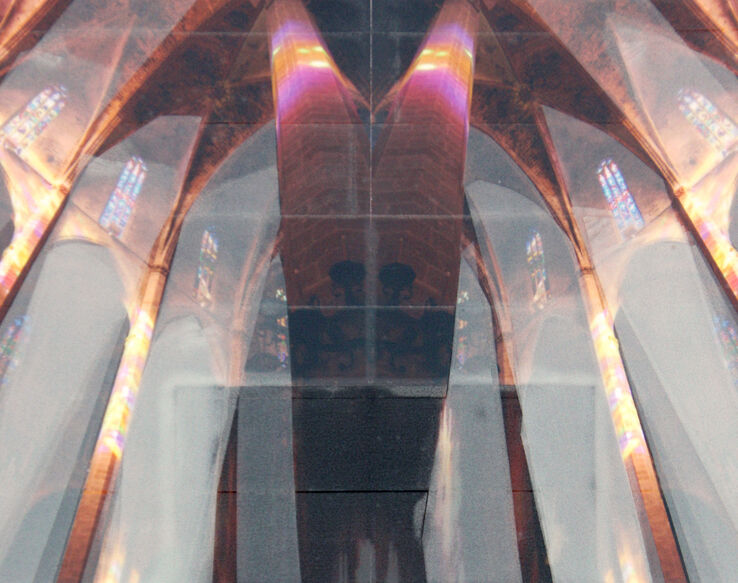
To fix the contact prints, I used Scotch tape, a special type of tape that is semi-transparent and very durable. Over time, this Scotch tape became an increasingly important element in my work. By sticking it on top of each other and covering it in several layers, I can model different fragments of varying intensity out of the photograph.
I also like the unpretentiousness of this material.
Layers of Time
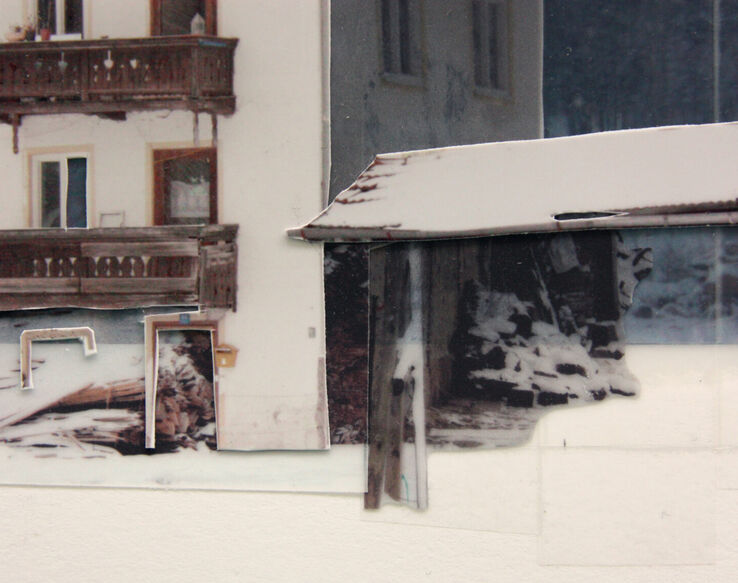
In the course of dealing with the subject of time and layers of time, I began to cut up my photographs (photographed time) with a scalpel. This allows me to separate different layers of perception from each other and place them in the foreground or background.
For example, by separating vegetation and rock, nature and architecture or elements further back in time and very recent ones.
Layers in the third dimension
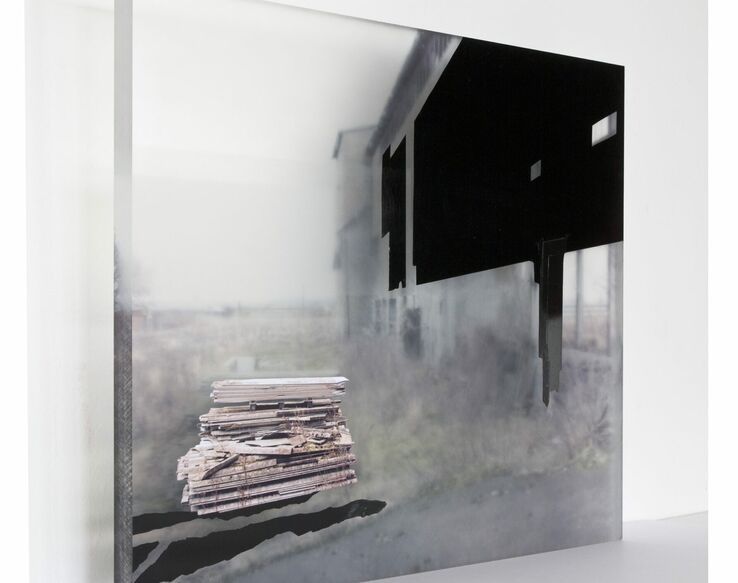
Soon after the beginnings, the desire arose to separate the layers spatially. Acrylic glass panes of different thicknesses added a third dimension to my works and they became wall sculptures. The edges also play an important role and are either left cut, polished or colored.
The texture of the surface
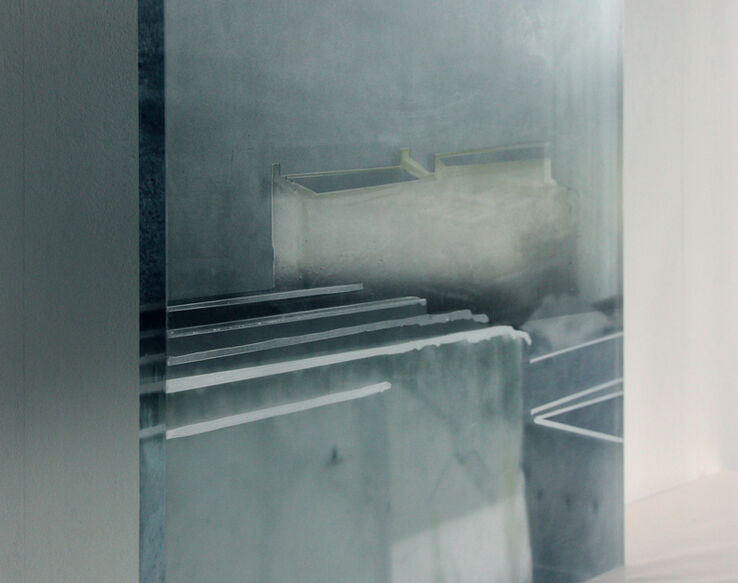
The treated surface of the acrylic glass plate forms an additional layer. Surfaces sanded with fine sandpaper create a slightly milky veil over parts of the picture and become so dense from an oblique viewing angle that the motif almost disappears completely. The cut-outs treated with clear lacquer literally zoom in on parts of the picture, with an almost magnifying glass-like effect. I cover some areas completely with colored varnish. The basic motif is printed, usually transparently, on the back of the plate.
Perspective determines Perception
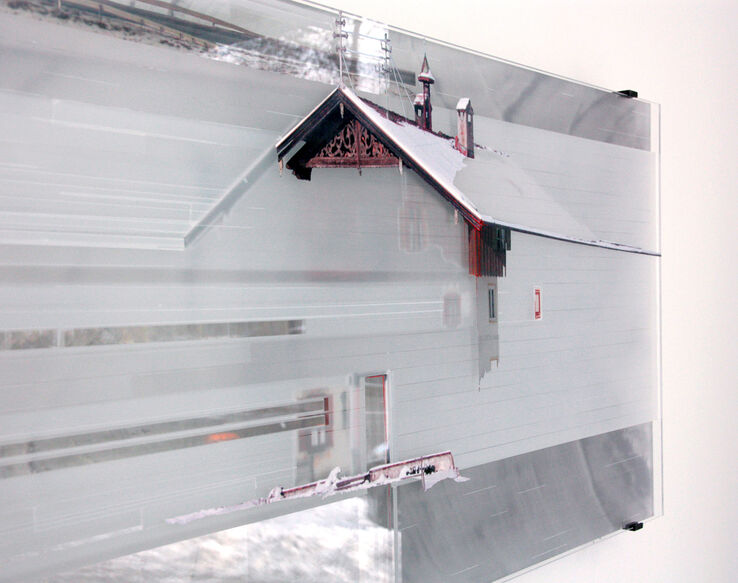
The artwork appears completely different from every perspective. Depending on the angle of view, different fragments appear in the foreground or background, and sometimes they disappear completely. The result is an impression similar to that of a landscape seen from a moving car.
Spatial Sculptures
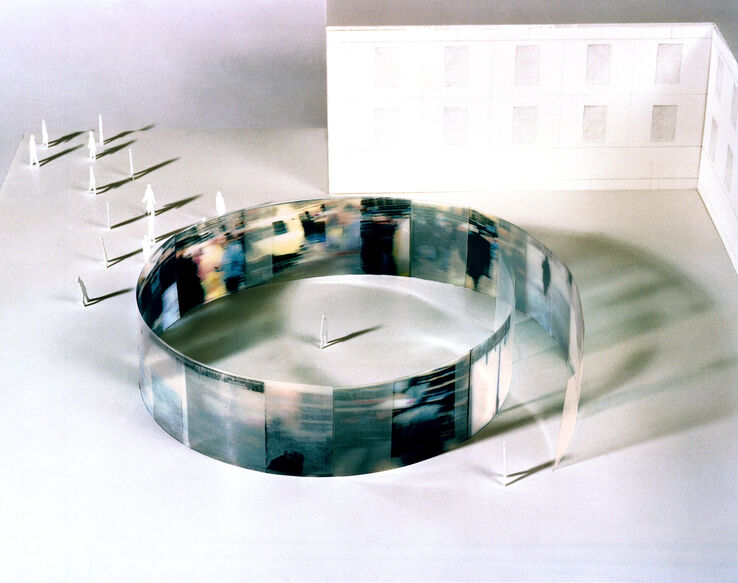
The three-dimensionality of the wall works is created by the multi-layered structure of the picture, which I developed based on the idea of layers of time. The step to a free-standing sculpture in space was not far for me, as it simply involves "unfolding" and reassembling layers. Similar to how a ribbon can be turned into a loop in just a few steps.
For me, photography, a fragment of photographed reality taken out of time, is always the basis for all these considerations and determines every step of my realization.


